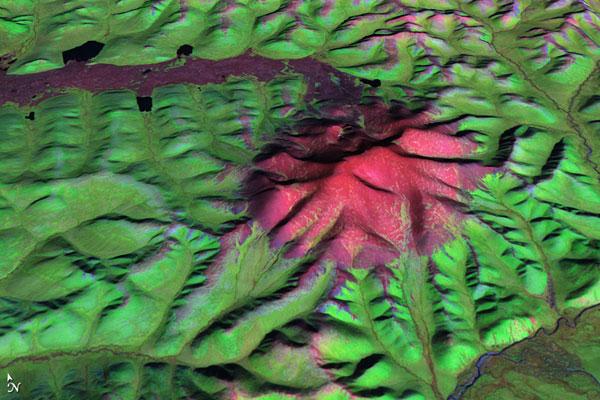Evidence of Lahar at the Anyuyskiy Volcano


In far eastern Russia, north of the Kamchatka Peninsula, lies Anyuyskiy Volcano. Now dormant, the volcano was once active enough to send a massive laharan avalanche of volcanic ash and rock mixed with water50 kilometers (30 miles) down the west side of the volcano summit.
The dried, hardened remains of the lahar persist today, a streak of barren rock on a landscape that is otherwise richly vegetated.
On September 13, 2003, the Advanced Spaceborne Thermal Emission and Reflection Radiometer (ASTER) on NASA's Terra satellite captured this view of Anyuyskiy, according to a NASA statement. ASTER can map elevation while collecting imagery, so in this false-color image, the image data has been draped over elevation data to make this 3-D visualization.
Vegetation appears bright green; bare rocks and ice appear bright red; water appears navy blue. Even in summer, traces of snow cover cling to the highest peaks.
The old lahar from Anyuyskiy extends from the north slope, turning westward immediately north of Anyuyskiy and flowing toward the west-southwest. Lakes occur along the margins of the lahar, and some small lakes appear on the lahar's surface, but little vegetation has encroached on the ancient river of rock.
When Anyuyskiy released this lahar, the slurry of volcanic mud likely mowed down everything in its path. Despite having the texture of wet cement, lahars can flow rapidly. Depending on how they formed, they can range in temperature from cold to scalding. To learn move about lahars, see the Earth Observatory feature When Rivers of Rock Flow.
Get the world’s most fascinating discoveries delivered straight to your inbox.



